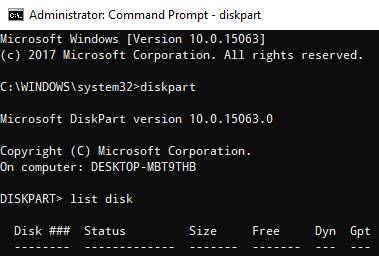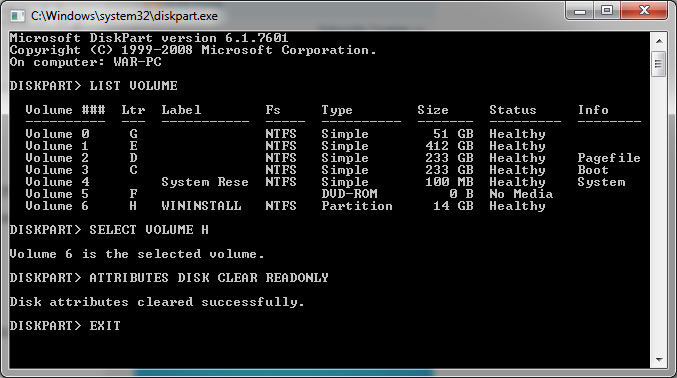

Selects the specified volume, where disknumber is the volume number, and gives it focus. Selects the specified disk, where disknumber is the disk number, and gives it focus.ĭisplays the properties of the selected disk and the volumes on that disk.


The disk marked with an asterisk (*) has focus.
Change disk number in windows free#
Īt the DISKPART prompt, type detail disk.įor each volume on the disk, at the DISKPART prompt, type select volume= and then type delete volume.Īt the DISKPART prompt, type select disk, specifying the disk number of the disk that you want to convert to a basic disk.Īt the DISKPART prompt, type convert basic.ĭisplays a list of disks and information about them, such as their size, the amount of available free space, whether the disk is a basic or dynamic disk, and whether the disk uses the Master Boot Record (MBR) or GUID Partition Table (GPT) partition style. Note the disk number you want to convert to basic.Īt the DISKPART prompt, type select disk. To change a dynamic disk back to a basic disk by using a command lineĪt the DISKPART prompt, type list disk. When all volumes on the disk have been deleted, right-click the disk, and then click Convert to Basic Disk. In Disk Management, select and hold (or right-click) each volume on the dynamic disk you want to convert to a basic disk, and then click Delete Volume. After Computer Management opens, go to Storage > Disk Management. Open Disk Management with administrator permissions.Īn easy way to do so is to type Computer Management in the search box on the taskbar, select and hold (or right-click) Computer Management, and then select Run as administrator > Yes. To change a dynamic disk back to a basic disk by using Disk Managementīack up all volumes on the disk you want to convert from dynamic to basic. Make sure you back up any data you want to keep before proceeding. To convert a dynamic disk back to a basic disk you must delete all volumes from the disk, permanently erasing all data on the disk.


 0 kommentar(er)
0 kommentar(er)
